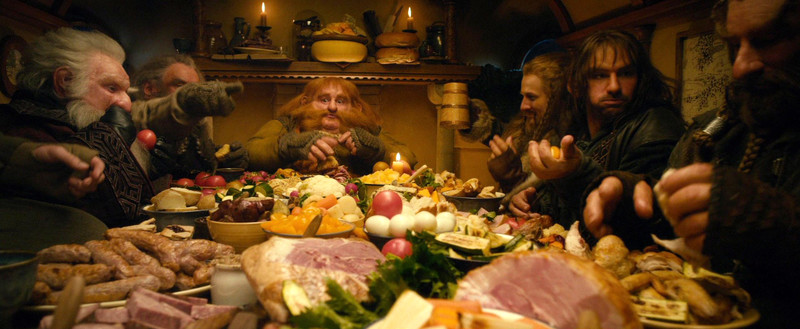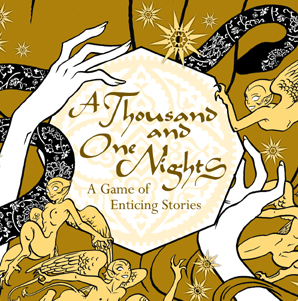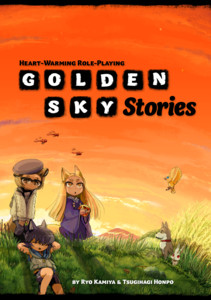Off-topic: Strongholds, downtime, and slow gaming in tabletop RPGs
Published on

The term slow gaming has recently been used to describe video games with a slower pace and without obvious, predefined goals. Like other parts of the “slow moment”, slow gaming encourages people to take their time with something in order to gain a deeper appreciation of it.
While slow gaming is certainly a part of recent successes like Minecraft, Pokémon Go, and No Man’s Sky, there are also clear elements of slow gaming in older titles like Harvest Moon, The Legend of Zelda, and Shenmue. Even games that are not intended for slow gaming can sometimes be used for that purpose anyway; while Assassin’s Creed: Black Flag is ultimately centered around stealth, combat, and linear missions, I personally play it solely for the treasure hunting.
Slowness in tabletop RPGs
As with many other gaming innovations, one early source of slow gaming is the tabletop RPG hobby. Tabletop RPGs are often considered the first form of gaming to introduce a persistent world that exists and evolves between sessions. A persistent world is a central feature of many slow games, as it greatly increases the player’s chance to play the game at their own pace. While early tabletop RPGs may not have included slowness as a part of their rules, it is easy to imagine some of the first Dungeons & Dragons groups spending entire sessions within the walls of the local tavern, simply gossiping between each other and interacting with NPCs.
Another early feature of tabletop RPGs—made possible by a persistent world—is the idea of strongholds. A stronghold is a base of operations for PCs during a campaign, so beloved in Dungeons & Dragons culture that their inclusion in Baldur’s Gate 2 was one of that game’s main selling points. While a stronghold itself may not automatically lead to slow gaming—after all, the stronghold can be attacked by invaders or otherwise affected by troubles nearby—they are closely related to another concept that inherently promotes slow gaming: downtime.
Downtime is the answer to a question that inevitably gets asked in a long-running campaign about adventurers in a persistent world: What do adventurers do between adventures? While downtime can be used simply for mechanical effects like healing, crafting, and training, many players seem instinctively attracted to the prospect of acting out their characters just living their daily lives.
In a downtime “adventure”, the goal may be nothing more than stocking the nation’s best library or finding out which hero is stealing cookies from the cookie jar. One of the most vivid memories from my earliest Dungeons & Dragons campaign involves the PCs enthusiastically decorating their new stronghold and discussing what color drapes they should put in, with the barbarian vigorously championing pink.
Slow gaming is also closely related to sandbox play, which is a popular style of campaign that places PCs in a world where they, rather than their superiors or antagonists, drive the action. While sandbox play is easily combined with slow gaming, one does not necessarily lead to the other. In many sandbox campaigns, the setting has been designed with the same emphasis on clear goals as in a typical campaign, differing only in how and when PCs achieve those goals.
Features of slow games

What are some common features of slow games? Below is a partial list:
- Self-defined goals: When PCs set their own goals, they have much greater control over their deadlines and the cost of failure. A lot of the time, this is the spark needed to finally slow down and reconsider the value of stressful goals. While GMs are traditionally taught to design adventures that “hook” the PCs with a sense of danger and urgency, that loses its importance when PCs create their own hooks. With self-defined goals, it is—sometimes literally—the PCs rather than the GM who are going fishing.
- Flexible pacing: Needless to say, games that allow PCs to set their own pace are much easier to use for slow gaming, as the system is not getting in the way of their two-hour conversation with the king’s jester. Games inspired by movies (including any system that emphasizes “cinematic” play) are harder to use in this way, since they often assume that sessions will follow a certain dramatic structure. Just like movies such as The Hobbit and The Avengers, they can include downtime or stronghold moments between or before the action, but the rules will usually demand that these be the exception rather than the rule.
- A living world: When PCs aren’t constantly reacting to threats or racing to find treasure, they inevitably get time to truly explore the world around them, and everyday details suddenly become an important part of the experience. When players treat the inn as merely a way of recovering HP, the innkeeper’s personality and background may not mean anything, but they can become the focus of entire sessions when the PCs spend a week in the inn during a severe adventure drought.
Adding slowness to your game



If the idea of slow gaming appeals to you, there are effectively two ways to create the slow experience for your own group: either switch to a system with slowness built in or add slowness to your current system.
While the slow elements of most popular tabletop RPGs generally originate from culture rather than rules, there are games, especially indie titles, where slow gaming is not only possible but actually designed into the rules. Examples of such games include 1001 Nights, Golden Sky Stories, and even Og. If you go this route, it is crucial to make sure that all players are excited about the premise of the game itself, or any slowness provided by the rules will quickly turn to dullness instead.
If you are adding slowness to an existing system, there are without a doubt countless ways to slip them into the rules, but all of them carry some degree of risk. After all, the very idea of imposing slow gaming as a necessary goal goes against the concept of slowness itself. For better or worse, the only effective way of achieving slowness might be to let it develop on its own. It may well be a slow process—but wasn’t that what we were looking for all along?
If you have comments on this post, send them in and they might be featured on the blog.